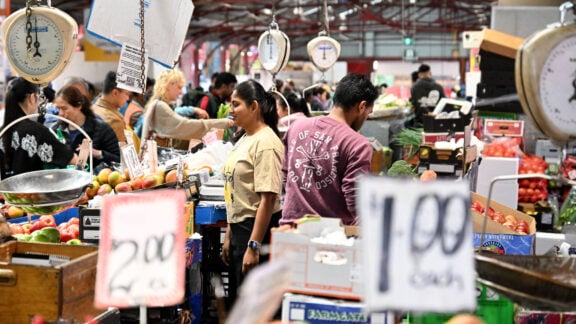Jonathan Barthelmess,
The Apollo:
“Spoon sweets: love them!” Johnathan Barthelmess, executive chef of Sydney’s Greek restaurant The Apollo, says emphatically.
“My favourite are the baby tomatoes; we made some before we opened [The Apollo] which we still have.
Like Susie above, Johnathan tells Neos Kosmos that his favourise of all the glyko tou koutaliou are the unripe walnuts. But says the one spoon sweet that sparked his interest were made from rose petals.
Susie Rerakis, Philhellene Provincial Greek Cuisine:
Just this week, Susie Rerakis, director of Philhellene Provincial Greek Cuisine, and the ‘mums’ of the restaurant – cooks Katina Rerakis and Eleni Gerassimou – had just embarked on creating this winter’s supply of orange glyko tou koutaliou. She took time out of her busy day to chat with Neos Kosmos and talk about her memories of this sweet delicacy and how the mums created their year long supply of orange spoon sweets.
“All our aunties, John’s [husband and director of Philhellene’s] yiayia and our parents; they used to make glyko tou koutalou because that’s the only sweet they had when they were young because that’s all they could really afford as they couldn’t afford chocolate and other sweets. Whatever they had in season, they wouldn’t waste anything like lemon peel, orange peel, grapes, so the only product they really needed to buy was the sugar, then of course it would last all year and they used to hide it so the kids wouldn’t get to it.”
Susie’s favourite of all the glyko tou koutaliou is the karithi (walnuts). She recalls a time her and her sister-in-law tried to recreate this delicacy using three competing traditional recipes and although it didn’t work out, she vows to try again this year. She remembers getting a jar of walnut spoon sweets from a tiny village in Epirus, near Metsovo and getting through the lot between her and John on a visit to Greece.
“When I saw the mums in here the other day I just had to sit down with them and find out exactly how to do it,” she says of the tradition of the family getting together to recreate this sweet treat.
“They took two boxes of oranges, and they had to grate the peel to take the bitterness off. I helped them out with the grating as you can imagine with that amount it was a lot of hard work”.
Unlike the old days when they would use thread to sew the peels together, the mums decided to use bamboo skewers to hold the peel in the large casserole dish of syrup. They placed about five to six peels on the skewer. The next step was to make the syrup using sugar and water, then when the syrup was thick, they would add in the peels to soak overnight. The next day they reheated the syrup – almost like double boiling them – so the syrup would bind to the peel, and ensure they were preserved properly. Then they placed the peels in steralised jars and sealed to enjoy all year round.
“I always remember going to an auntie’s house and that’s all she had to offer and I remember her getting the vaso of spoon sweets and she’s always present it on the same little plates and I remember thinking this is amazing. And just that small piece was always enough.”









